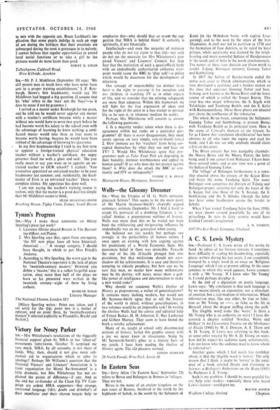In Eastern Seas
Sut,-"---Jerry Allen ('In Eastern Seas,' September 23) refers to Berau and Bulungan in Borneo as 'villages. They are not.
Berau is the name of an ancient kingdom on the east coast of Borneo, bordered in the north by the highlands-of Sabah, in the south-by the-Sultanate of
Kutei (in the Mahakam basin, with capital Teng- garong), and to the west by the spurs of the Iran Mountains. A civil war led to partition in 1770 and the formation of four districts, to be ruled by local princes, while suzerainty was claimed by the neigh- bouring and more powerful Sultans of Bandjermasin in the south and of Sulu in the north simultaneously. The names of these four districts are (from north to south). Tidung, Bulungan (proper), Gunung Tabur and Sambaliung.
In 1817 the Sultan of Bandjermasin ceded the entire east coast to Dutch administration, which in time developed a coalmine and a bunker station on the river that separates Gunung Tabur and Sam. baliung, now known as the Berau River and the lower course of which is called the Sungai Kuran. This river has two major tributaries, the S. Segah with Telukbajur and Tandjung Redeb, and the S. Kelai with Rantaupandjang. These three places are situated just above the confluence of the tributaries.
The whole Berau basin, comprising the Sultanates Gunung Tabur and Sambaliung. is present Berau, with Tandjung Redeb as its principal town. Here is the scene of Conrad's Outcast of the Islands. So far as I know this 'conclusive identification' has been obvious to all who knew the region and read the book, and I do not see why anybody should claim a first on this score.
The Berau estuary has two navigable channels: the Muara Berau and the Muara Pantai, the latter being used if one comes from Makassar. I have been there several times, and at one time was a guest of the Sultan of Gunung Tabur.
The 'village' of Bulungan furthermore is a town- ship situated above the estuary of the Kajan River and bears the name Tandjung Selor. The name Bulungan now comprises the districts of Tidung and Bulungan-proper, covering not only the basin of the S. Kajan, but also those of the S. Sesajap, the S. Sembakung and the S. Sebuku (though the latter two have some headwaters across the border in Sabah).
When I last visited Tandjung Selor (in June 1950), we were shown around gracefully by one of its princelings. In turn its fairy scenery would have kindled Conrad's imagination






































 Previous page
Previous page